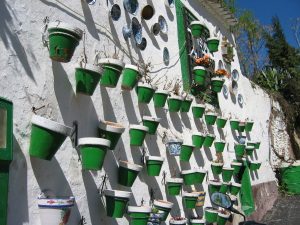 John M. Edwards gets vertigo and yells help in a lofty Andalusian precipice town where Walt Disney’s family supposedly originally came from. . . .
John M. Edwards gets vertigo and yells help in a lofty Andalusian precipice town where Walt Disney’s family supposedly originally came from. . . .
Away from the ugly urbanization of Spain’s Costa del Sol, along scenic Highway 44, I arriveD in my leased “Europe by Car” vehicle via Marbella to Ronda, one of the most beautiful villas blancos (“white villages”) in the Andalusian countryside.
Perched, this improbably fantastic nest persists on the Quixotic verge of imagination, surrounded by gangly storks, much like waking up inside a Magic Realism novel, or better, a Brothers Grimm fairytale.
Here I felt the “Night on Bald Mountain” enormity of what was purportedly the Disney family’s original hometown, best described by the Hitchcockian noun “vertigo” and soon reduced by familiarity into the adjective “vertiginous.” With an extreme fear of heights, I looked out over the three impressive bridges in hilltop Ronda, like a challenger in “Fear Factor,” and down upon an over 100-meter-deep gorgeous gorge which made me literally swoon.
“Help me, Ronda, help, help me, Ronda!”
Situated in craggy mountains resembling a cubist mutilated hand painted by Picasso, Ronda is on the “El Tajo de Ronda” canyon among Spanish Fir trees, senoritas with olive eyes, and live pork running wild, all living about 750 meters (2,460 feet) above sea level. Ronda (population: 35,000) is divided by the scenic cleft of the Guadalevin River.
After checking into the historic “Parador de Ronda” near the former town hall, which sits next to the Puente Nuevo with a view over the canyon, I set about to sightsee. And here, that means braving the “bridges” for impromptu precarious picnics.
The Puente Romano (“Roman Bridge”), Puente Viejo (“Old Bridge”), and Puente Nuevo (“New Bridge”) span the canyon like the architectural aberrations of a disordered mind, very Braque. The term “nuevo” is a bit off, as the building of the New Bridge commenced in 1751 and took until 1793 to complete. The Puente Nuevo became my pilgrimage spot for daily picnics, where I ate ham, cheese, and tomato bocadillos acquired from a nearby tapas bar called La Giraldo. It is the tallest of the bridges, towering 120 metres (390 ft) above the canyon floor.
Founded by dizzy Sixth-Century-Before-Christ Iberian Celts and Visigoths, the impossibly perched city was originally called “Arunda.” Rebuilt during the Second Punic War by the Roman Scipio Africanus, and later the conquering Moors, responsible for Arabic-style architecture such as the Casa del Rey Moro (House of the Moorish Kings), the city was the last in Iberia to be liberated by the Christians in 1485, thus completing the Spanish re-conquest.
After a short hike down the Calle Espinel, the main pedestrian shopping street (much like anywhere in the ATM-rich EuroZone), full of unemployed fashionistas dressed as if every day was Fashion Week, I wandered aimlessly among the narrow sidestreets dodging groups of playing “street arabs” and begging “caravan gypsies” until I stopped dead in my tracks. There in front of me an old cackling widow dressed in black was slitting the throat of a sacrificial goat, whose painful bleating sounded almost human, albeit garbled, amid the flurry of fluff and blood.
Passing by the eye candy of Marie de la Encarnacion, a Catholic church built inside a distinctive former mosque, I genuflected, just in case, before tackling the steep stone staircase leading down to the bottom of the gorge, 365 steps or less—I lost count.
Since Ronda is, according to many, where the annual “Corrida Goyesca” was invented, I sought out the NeoClassical-style “Plaza de Toros,” built in 1784 according to the plans of the architect José Martin de Aldehuela. Here, at one of the oldest bullfighting rings in Spain, I felt a little superior, if not downright PC, about not actually going to see one of the world’s most violently cruel spectator sports. Come on, why do they have to kill the bull?
In fact, part of bullfighting aficionado Papa Hemingway’s For Whom the Bell Tolls takes place here.
Often associated with frequent visitors Ernest Hemingway and Orson Welles, who set up camp in Ronda’s old quarter “La Ciudad” and often hung out at the partially intact 13th-century Banos Arabes (“Arab Baths”), Ronda was also a favorite of a rather famous German poet, Rainer Maria Rilke, who lived in a room at the Hotel Reina Victoria (built in 1906) kept as is, now a mini-museum. Included in the collection is a framed copy of Rilke’s hotel bill—quite reasonable according to modern-day standards.
Rilke wrote for all of us, “I have sought everywhere the city of my dreams, and I have finally found it in Ronda” and “There is nothing that is more startling in Spain than this wild and mountainous city.”
Sheer. . . .

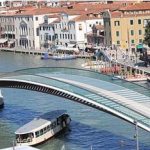
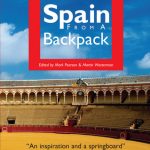

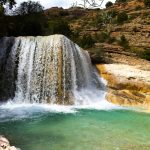
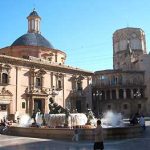

I loved Ronda, gorgeous and the canyon is stunning. I didn’t know it was Walt Disney’s family’s hometown.